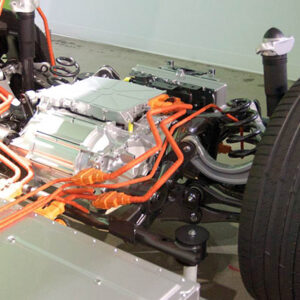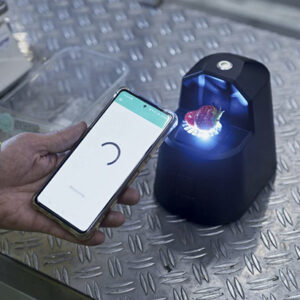
In order to power people’s normal, everyday lives, they require energy systems, and these produce wasted heat, such as the heat that comes from exhaust pipes on vehicles and hot water pipes in buildings for example.
But according to scientists from Penn State and the National Renewable Energy Laboratory, there is now a new flexible thermoelectric generator that can be wrapped around these pipes and other types of hot surfaces, which can now convert wasted heat into electricity way more efficiently than what was possible before.
According to associate vice president for research and professor of materials science and engineering at Penn State, “A large amount of heat from the energy we consume is essentially being thrown away, often dispersed right into the atmosphere. We haven’t had cost-effective ways with conformal shapes to trap and convert that heat to useable energy. This research opens that door.”
The group of researchers from Penn State has been busy working on improving the performance of these thermoelectric generators. These are devices that can convert differences in temperature to electricity, and when they are placed near heat sources, the scientists explain that the electrons move from the hot side to the cold side, which produces an electric current.
The team had previously created rigid devices that were ‘more efficient than commercial units in high-temperature applications.’ But now, the team has managed to develop a new type of manufacturing process that can now produce flexible devices that also give higher power output and efficiency.
Assistant research professor at Penn State, Wenjie Li explains, “These results provide a promising pathway toward widespread utilization of thermoelectric technology into waste heat recovery application. This could have a significant impact on the development of practical thermal to electrical generators.”
The scientists also explain that these flexible devices are a much better fit than even the current most attractive waste heat sources, such as pipes in the residential and industrial buildings, and those on vehicles. Meanwhile, they also don’t require to be glued onto the surfaces, like how the traditional and more rigid devices to, which in turn decreases their efficiency.
Getting Positive Results
The group of scientists shared with Applied Materials & Interfaces that they conducted tests on gas flue, which is the new device that exhibited 150% higher power density than other state-of-the-art units. They explained that ‘a scaled-up version, just over 3-inches squared, maintained a 115% power density advantage. That version exhibited a total power output of 56.5 watts when placed on the hot surface.’
Priya explained, “Think about an industrial power plant with pipe hundreds of feet long. If you can wrap these devices around an area that large, you could generate kilowatts of energy from wasted heat that’s normally just being thrown away. You could convert discarded heat into something useful.”
These thermoelectric devices are made up of small couples, which look like a table with two legs. And many of these ‘two-leg couples’ are also connected together, which typically tend to form a flat, square device.
With the new device, the scientists put six couples along a thin strip, after which, they used flexible metal foil to connect 12 strips together, which created a device with 72 couples. Then liquid metal was placed between the layers of each strip to improve their device performance.
Associate research professor at Penn State, Bed Poudel, said, “As you scale up these devices, you often lose power density, making it challenging to fabricate large-scale thermoelectric generators. This illustrates the extraordinary performance of our 72-couple device.”
It was the 72-couple device that showed ‘the highest reported output power and device power density form a single thermoelectric generator.’The gaps found between the strips give the flexibility for the device to fit around different shapes, such as the pipes. They also allow for more ‘flexibility in altering the fill factor, or the ratio between the area of thermoelectric material and the area of the device.’ The scientists also explain that this is also what could be used to optimize thermoelectric devices for a variety of heat sources.
What are your thoughts? Please comment below and share this news!
True Activist / Report a typo


